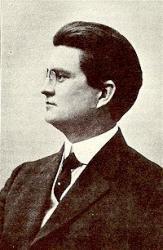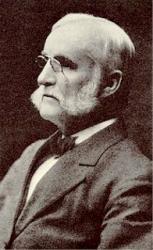Planning worship?
Check out our sister site, ZeteoSearch.org,
for 20+ additional resources related to your search.
- |
User Links
Person Results
‹ Return to hymnal





Export as CSV
Martin Madan

1726 - 1790 Person Name: Martín Madán Hymnal Number: 35 Translator of "Oíd Un Son En Alta Esfera" in El Nuevo Himnario Popular (Edicion Revisada y Corregida) Madan, Martin, son of Colonel Martin Madan, and brother of Dr. Spencer Madan, sometime Bishop of Peterborough, was born in 1726. He was to have qualified for the Bar, but through a sermon by J. Wesley on the words "Prepare to meet thy God," the whole current of his life was changed. After some difficulty he received Holy Orders, and subsequently founded and became chaplain of the Lock Hospital, Hyde Park Corner. He was popular as a preacher, and had no inconsiderable reputation as a musical composer. He ceased preaching on the publication of his work Thelyphthora, in which he advocated the practice of polygamy. He died in 1790. He published A Commentary on the Articles of the Church of England; A Treatise on the Christian Faith, &c, and:- A Collection of Psalms and Hymns Extracted from Various Authors, and published by the Reverend Mr. Madan. London, 1760.
This Collection contained 170 hymns thrown together without order or system of any kind. In 1763 he added an Appendix of 24 hymns. This Collection, referred to as Madam’s Psalms & Hymns, had for many years a most powerful influence on the hymnody of the Church of England. Nearly the whole of its contents, together with its extensively altered texts, were reprinted in numerous hymnbooks for nearly one hundred years. At the present time many of the great hymns of the last century are in use as altered by him in 1760 and 1763. Although several hymns have been attributed to him, we have no evidence that he ever wrote one. His hymnological labours were employed in altering, piecing, and expanding the work of others. And in this he was most successful.
-- John Julian, Dictionary of Hymnology (1907)
============================
Martin Madan
Ernesto Barocio
1876 - 1948 Hymnal Number: 90 Translator of "Haz Lo Que Quieras" in El Nuevo Himnario Popular (Edicion Revisada y Corregida) Ernesto Barocio Ondarza. Baptist minister born in Mexico.
Dianne Shapiro
Ernesto Barocio
James Allen
1734 - 1804 Person Name: J. Allen Hymnal Number: 193 Author of "Dulces Momentos" in El Nuevo Himnario Popular (Edicion Revisada y Corregida) Allen, James, born at Gayle, Wensleydale, Yorkshire, June 24, 1734, and educated with a view to taking Holy Orders, first with two clergymen at different times, and then for one year at St. John's Coll., Cambridge. Leaving the University in 1752 he became a follower of Benjamin Ingham, the founder of the sect of the Inghamites, but subsequently joined himself to the Sandemanians; and finally built a chapel on his estate at Gayle, and ministered therein to the time of his death; died 31st Oct., 1804. He published a small volume, Christian Songs, containing 17 hymns, and was the editor and a principal contributor to the Kendal Hymn Book, 1757, and Appendix to the 2nd edition, 1761.
-- John Julian, Dictionary of Hymnology (1907)
James Allen
Flora Kirkland
1862 - 1911 Hymnal Number: 181 Author of "En El Templo" in El Nuevo Himnario Popular (Edicion Revisada y Corregida) Flora Kirkland was born in 1862 in Kentucky, before moving to Brooklyn, New York. After graduating from school she became a public school teacher for the seventh grade. She was a member of Tompkins Avenue Congregational Church for which she wrote a number of hymns. She was very active in the Wallabout Bay Mission in that neighborhood of Brooklyn. Most of Wallabout Bay would be filled in to make way for the Brooklyn Navy Yard. She died 17 January 1911.
Brooklyn Standard Union, 16 January 1911
Flora Kirkland
Thomas M. Westrup
1837 - 1909 Person Name: T. M. Westrup Hymnal Number: 7 Translator of "Fuente De La Vida Eterna" in El Nuevo Himnario Popular (Edicion Revisada y Corregida) Thomas Martin Westrup moved with his family from London to Mexico when he was fifteen years old. He translated hundreds of hymns and, along with his son, Enrique, published a three-volume hymnal Incienso Christiano.
Dianne Shapiro from Celebremos su Gloria (Colombia/Illinois: Libros Alianza/Celebration), 1992
Thomas M. Westrup
Grant Colfax Tullar

1869 - 1950 Hymnal Number: 287 Composer of "[En presencia estar de Cristo]" in El Nuevo Himnario Popular (Edicion Revisada y Corregida) Grant Colfax Tullar was born August 5, 1869, in Bolton, Connecticut. He was named after the American President Ulysses S. Grant and Vice President Schuyler Colfax. After the American Civil War, his father was disabled and unable to work, having been wounded in the Battle of Antietam. Tullar's mother died when he was just two years old so Grant had no settled home life until he became an adult. Yet from a life of sorrow and hardship he went on to bring joy to millions of Americans with his songs and poetry.
As a child, he received virtually no education or religious training. He worked in a woolen mill and as a shoe clerk. The last Methodist camp meeting in Bolton was in 1847. Tullar became a Methodist at age 19 at a camp meeting near Waterbury in 1888.
He then attended the Hackettstown Academy in New Jersey. He became an ordained Methodist minister and pastored for a short time in Dover, Delaware. For 10 years he was the song leader for evangelist Major George A. Hilton. Even so, in 1893 he also helped found the well-known Tullar-Meredith Publishing Company in New York, which produced church and Sunday school music. Tullar composed many popular hymns and hymnals.
His works include: Sunday School Hymns No. 1 (Chicago, Illinois: Tullar Meredith Co., 1903) and The Bible School Hymnal (New York: Tullar Meredith Co., 1907). One of Grant Tullar's most quoted poems is "The Weaver":
My Life is but a weaving
Between my Lord and me;
I cannot choose the colors
He worketh steadily.
Oft times He weaveth sorrow
And I, in foolish pride,
Forget He sees the upper,
And I the under side.
Not til the loom is silent
And the shuttles cease to fly,
Shall God unroll the canvas
And explain the reason why.
The dark threads are as needful
In the Weaver's skillful hand,
As the threads of gold and silver
In the pattern He has planned.
He knows, He loves, He cares,
Nothing this truth can dim.
He gives His very best to those
Who chose to walk with Him.
Grant Tullar
--http://www.boltoncthistory.org/granttullar.html, from Bolton Community News, August 2006.
Grant Colfax Tullar
H. Ernest Nichol
1862 - 1928 Hymnal Number: 127 Composer of "[La historia de Cristo diremos]" in El Nuevo Himnario Popular (Edicion Revisada y Corregida) H. Ernest Nichol (b. Hull, Yorkshire, England, 1862; d. Skirlaugh, Yorkshire, England, 1926) had begun a study program in civil engineering when he decided to study music instead. In 1888 he received a bachelor's degree in music from Oxford University. Nichol wrote some 130 hymn tunes and texts, many under the pseudonym “Colin Sterne” (derived from his middle and last name); many were first sung at church school programs.
Psalter Hymnal Handbook
=============
Nichol, Henry Ernest, was b. Dec. 10, 1862, at Hull. He took the degree of MUS. BAC. at Oxford in 1888. He has written fourteen sets of Sunday School Anniversary Hymns (130 in all), with original tunes, besides many published in leaflet form, mostly under the anagram of 1677
Colin Sterne. The following are in the Sunday School Hymnary, 1905, the dates being those of composition and publication by the author:—
1. Life is opening out before you. Christian Courage 1897.
2. Rest, O rest! at eve Thy children's voices. Evening. 1897.
3. We've a story to tell to the nations. Foreign Missions. 1896.
4. Where the flag is flying. Boys Brigade. 1901.
[Rev. James Mearns, M.A.]
--John Julian, Dictionary of Hymnology, New Supplement (1907)
H. Ernest Nichol
George C. Stebbins

1846 - 1945 Person Name: George S. Stebbins Hymnal Number: 63 Composer of "[Con voz benigna te llama Jesús]" in El Nuevo Himnario Popular (Edicion Revisada y Corregida) Stebbins studied music in Buffalo and Rochester, New York, then became a singing teacher. Around 1869, he moved to Chicago, Illinois, to join the Lyon and Healy Music Company. He also became the music director at the First Baptist Church in Chicago. It was in Chicago that he met the leaders in the Gospel music field, such as George Root, Philip Bliss, & Ira Sankey.
At age 28, Stebbins moved to Boston, Massachusetts, where he became music director at the Claredon Street Baptist Church; the pastor there was Adoniram Gordon. Two years later, Stebbins became music director at Tremont Temple in Boston. Shortly thereafter, he became involved in evangelism campaigns with Moody and others. Around 1900, Stebbins spent a year as an evangelist in India, Egypt, Italy, Palestine, France and England.
(www.hymntime.com/tch)
George C. Stebbins
W. G. Fischer

1835 - 1912 Person Name: William G. Fischer Hymnal Number: 26 Composer of "[Grato es decir la historia]" in El Nuevo Himnario Popular (Edicion Revisada y Corregida) William Gustavus Fischer In his youth, William G. Fischer (b. Baltimore, MD, 1835; d. Philadelphia, PA, 1912) developed an interest in music while attending singing schools. His career included working in the book bindery of J. B. Lippencott Publishing Company, teaching music at Girard College, and co-owning a piano business and music store–all in Philadelphia. Fischer eventually became a popular director of music at revival meetings and choral festivals. In 1876 he conducted a thousand-voice choir at the Dwight L. Moody/Ira D. Sankey revival meeting in Philadelphia. Fischer composed some two hundred tunes for Sunday school hymns and gospel songs.
Bert Polman
W. G. Fischer
Chas. H. Gabriel

1856 - 1932 Person Name: Charles H. Gabriel Hymnal Number: 72 Composer of "[Cuán glorioso es el cambio operado en mi sér]" in El Nuevo Himnario Popular (Edicion Revisada y Corregida) Pseudonyms: C. D. Emerson, Charlotte G. Homer, S. B. Jackson, A. W. Lawrence, Jennie Ree
=============
For the first seventeen years of his life Charles Hutchinson Gabriel (b. Wilton, IA, 1856; d. Los Angeles, CA, 1932) lived on an Iowa farm, where friends and neighbors often gathered to sing. Gabriel accompanied them on the family reed organ he had taught himself to play. At the age of sixteen he began teaching singing in schools (following in his father's footsteps) and soon was acclaimed as a fine teacher and composer. He moved to California in 1887 and served as Sunday school music director at the Grace Methodist Church in San Francisco. After moving to Chicago in 1892, Gabriel edited numerous collections of anthems, cantatas, and a large number of songbooks for the Homer Rodeheaver, Hope, and E. O. Excell publishing companies. He composed hundreds of tunes and texts, at times using pseudonyms such as Charlotte G. Homer. The total number of his compositions is estimated at about seven thousand. Gabriel's gospel songs became widely circulated through the Billy Sunday-Homer Rodeheaver urban crusades.
Bert Polman
Chas. H. Gabriel


 My Starred Hymns
My Starred Hymns


